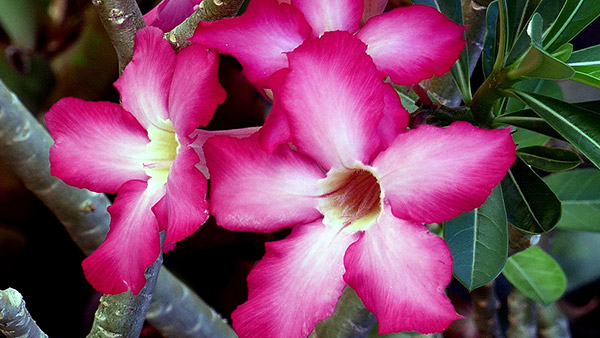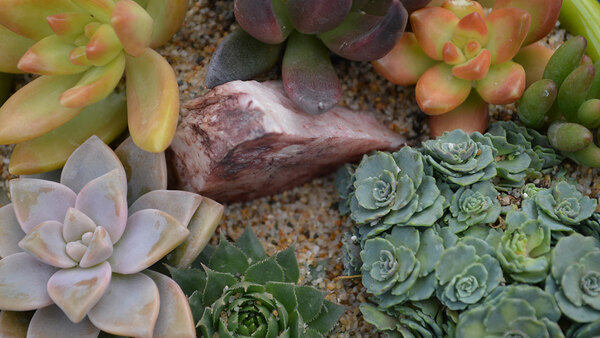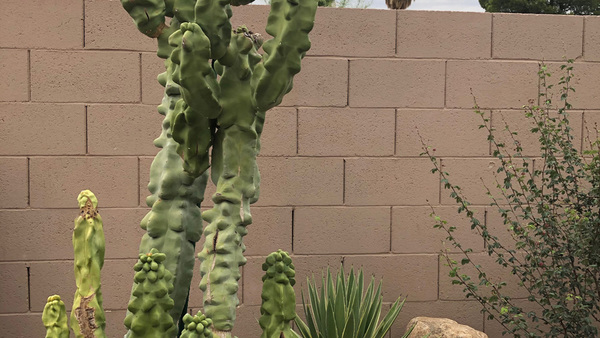
Lithops (Lithops spp. and cvs., Zones 10–11), also known as living stone or split rocks, are beautiful little plants. They come in a variety of colors, and when blooming they create a delicate, daisy-like flower. Lithops optima is the most common species sold in larger quantities, but many specialty nurseries in the Southwest carry other species. The care for lithops is similar no matter the species; they all follow similar growth patterns. They can challenge even the most qualified gardeners, but with a better understanding of how they grow, you can be successful in growing your own.
There are over 37 species of lithops and over 145 varieties, but all lithops have one very important trait in common: watering them at the wrong time will kill them. Lithops have a very specific growth cycle; one gardener we know described it as a “body language.” This allows us to better understand their needs. Additionally, they’re native to South Africa and are very capable of withstanding harsh, hot climates. They need bright light, and too little sunlight and/or freezing temperatures will also kill them off.

Most lithops need to be at least three years old before you’ll see any flowers. Once your lithop flowers, it will start to grow a new plant within the outer leaves. As the outer leaves shrivel, the new, inner plant continues to grow. Once the inner plant is large enough, it will take over where the old leaves once were. Lithops follow this cycle every year, although it’s possible that in some hotter climates they may go dormant until it’s time to bloom again.

Lithops have surprisingly decent root systems, so it’s really important to plant them in a deep enough container to ensure happy, healthy roots. When planting your lithops, use a mixture of 90% nonorganic material such as pumice, shale, or perlite, and a 10% high-draining soil mixture. Some gardeners in higher humidity areas should avoid the soil altogether and only use the nonorganic materials to plant their lithops in. It not only helps keep them from staying too moist, but it also helps prevent bacteria and fungi from invading.

Knowing when to water is the key to happy and flourishing lithops. When you see your lithops starting to pucker or getting a bit shriveled, this can be a telltale sign that they’re ready for water. However, this is also what they can look like before they shed their skin, which is a bad time to water. They’re tricky little buggers! That is why it’s extremely important to know exactly which stage of their life cycle they’re in. If you water them as they’re about to shed their skin, it could kill them. The most important thing to remember is to water only after the old leaves are all dried up and to stop watering before the flower dies. Flowering usually happens toward the end of summer and late fall. New growth happens during fall and spring. The old leaves act as the sole source of water for the new growth, so watering the plant during this time can cause root rot. Once the old leaves have dried up, give your lithop a deep watering. When watering, give it at least 8 ounces of water; make sure the water runs all the way through. This should be sufficient, but if it’s still looking wrinkled in a few weeks, you can give it one more soak. In a dry climate such as ours, watering your lithops once a month during the right growth cycle is all these little guys need to thrive.

Although this may seem like a lot of work for such little reward, lithops really are fascinating little plants. They’re intricately beautiful, and the way they continually reproduce is fascinating. Another tip: The key to understanding lithops is to start with one. Don’t combine several in a container until you have learned the life cycles of one or several individuals. Once you feel more comfortable with them, you can try combining multiple varieties, since they look amazing as clusters. The tricky part is that if they need water at various times, you can rot out some by trying to keep others alive. In other words, be patient. Learn their body language before diving in the deep end. Good luck, gardeners!
—Sheila Schultz and Laurel Startzel are a mother-daughter duo who founded Denver Dirty Girls Container Gardening while living in Denver and have continued their business since moving to Tucson, Arizona.


















Comments
Log in or create an account to post a comment.
Sign up Log in